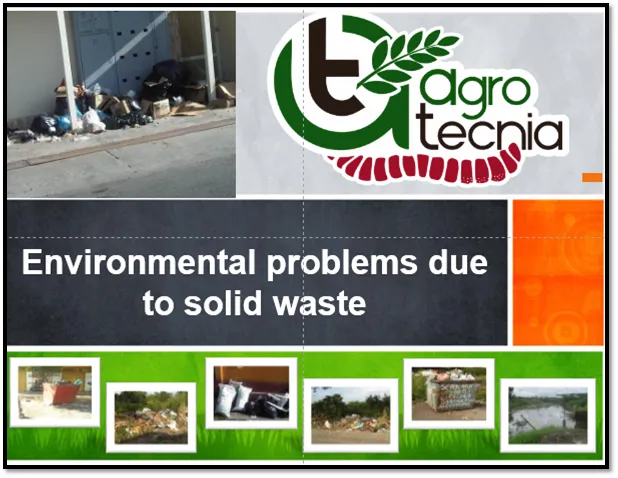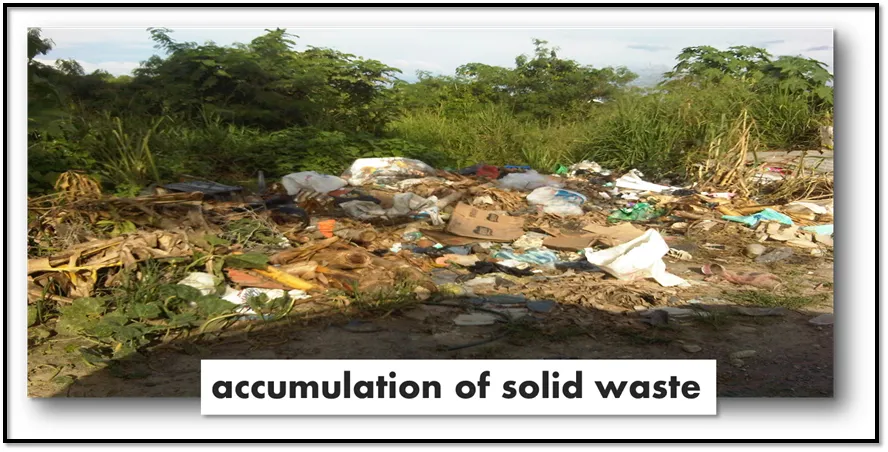Environmental problems have become widespread and intensified on the planet, introducing pollutants into the natural environment that cause instability, disorder, damage or discomfort in an ecosystem, this generated by the increase in population worldwide, which leads to an increase in the production of solid waste resulting in the proliferation of numerous diseases caused by littering in the natural environment.

Solid waste is a problem for many countries, especially for large cities, as well as for the entire population of the planet. Due to certain human activities and the high level of consumption have increased the amount of solid waste that we generate; coupled with this, with the inefficient management that is made to such waste causes problems such as pollution, that summarizes health problems and damage to the environment; in addition to provoking social and political conflicts, by burning or accumulation in urban spaces.
In Venezuela, according to Rocha and Nipple (2008), slightly more than 80% of solid waste remains exposed in some localities, the consequences have been reflected in public health problems with a marked deterioration of the urban landscape. Solid waste should be taken to appropriate locations where it receives the minimum sanitary and environmental treatment, so that the solution is not part of the problem.

In the same vein, some negative effects caused by some factors related to the accumulation of solid waste on human health and well-being will be described according to Roa (2002):
-Biological factors: These factors include pathogenic or infectious organisms that may be present in sewage or human feces and biological vectors may include rats, mosquito flies and cockroaches.
- Chemical factors: among these factors are the chemicals present in or generated from solid waste such as batteries, oils removed from vehicles and the indiscriminate incineration that emits gases into the atmosphere that can lead to respiratory diseases.
These factors psychologically influence the man by the possibility of contracting some disease, in addition to the decrease of the quality of life and the destruction of the landscapes by the deficient collection of such residues.

In the face of this major problem and its consequences, it is necessary to address its solution with a proposal to the competent bodies to design strategies for environmental education for the population, together with the placing of waste containers preferably in such a way as to establish the classification of waste to be thrown into them, It is also important that the garbage collection by the assigned transport is carried out in a period that maintains the availability of the same, which would avoid that they overflow and generate unpleasant odors.
Consequently, due to the environmental impact caused by this situation, it is necessary to build container facilities in localities with this type of problem, as there are people who throw garbage on the streets, sidewalks and brocales, thus causing the stagnation of waste water, creating favourable sites for the proliferation of pathogens and insect vectors such as mosquitoes, flies, cockroaches, among others; and causing a bad appearance to spaces such as parks, avenues, central hull, drains, glens, among others.
| bibliographic references |
|---|
Rocha N. and López A. (2008). Gastrointestinal diseases associated with the accumulation of solid waste, present in the community "Abelardo Bracho foundation" located in Santa Bárbara - Zulia - Municipality Colón. Unpublished undergraduate work, Bolivarian University of Venezuela, Santa Bárbara de Zulia.
Roa, J. (2009). Fundamentals of environmental processes. 3rd ed. Editorial UNET.

I hope the article was to your liking, Thank you for staying with me till the end.

